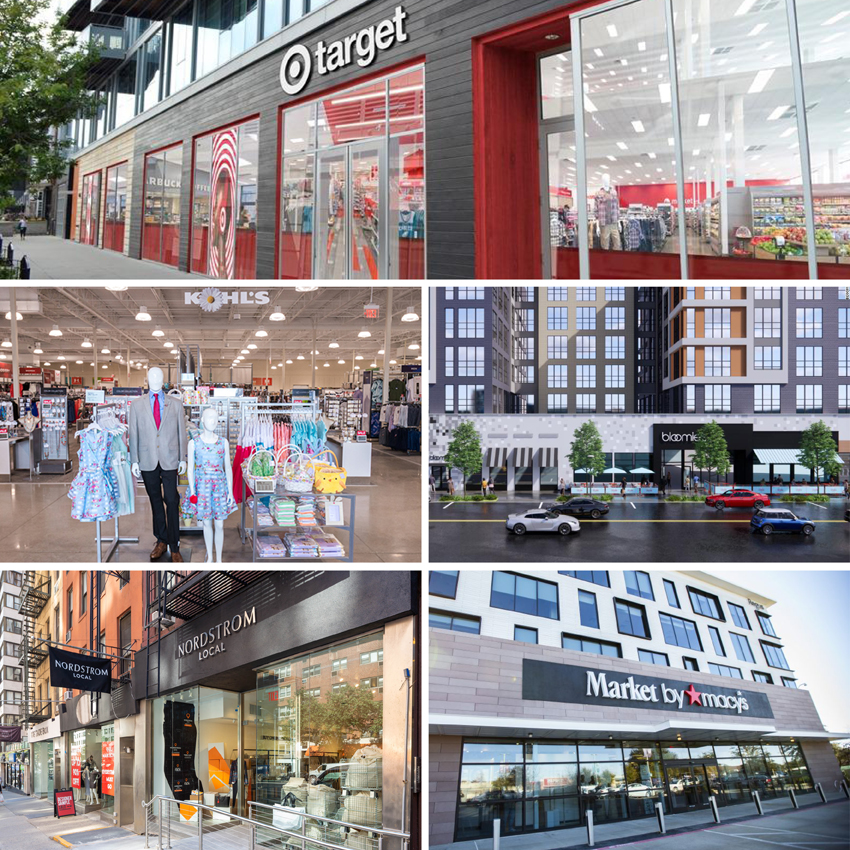If you think of yesterday’s “mass market” as a nice glass bowl, that market today has shattered into a thousand small fragments of glass. This was the opening sentence in Chapter 4 of my co-authored book with Michael Dart, Retail’s Seismic Shift, published in 2017.
Easy Come, Easy Go
Do you remember the “must-have toy,” or must have latest fashion trend, (probably triggered by John Fairchild splashing the “miniskirt” across the front page of WWD), or the hot jeans brand of the moment? Or how about the many other examples across consumer product industries that people would stand for hours in line waiting for the store opening? Apple comes to mind and the endless years of “Black Fridays.”
[callout]The thousands of new tech-driven digital brands — as well as the thousands of entrepreneurial new world “mom and pop” neighborhood shops — put enormous pressure on the big legacy national and retail brands to de-massify and fragment their businesses and brands.[/callout]
With few exceptions, popular must-have consensus has given way to the great fragmentation of mass markets into thousands, if not millions of mini, or niche markets. These micro-markets are characterized by both geographic locations, including within major cities, and consumer cultures or “tribes” populating those niche markets. Furthermore, within a tribe, each member likely shares similar lifestyle values, interests and beliefs with the rest of the group.
However, the big shift is that today’s dominant youth culture has little interest in a must-have of anything that limits their self-expression and conforms them to group think. Today’s tribes are made up of self-confident individuals who have defined their own personal wants and needs. And a cool factor is how each individual personally defines it, most often manifested in exclusivity. Who was it that said, “I\’d never join a club that would allow a person like me to become a member?” (Hint: Woody Allen.) Indeed, we are in the final phase of Maslow’s hierarchy, that of self-actualization.
Fragments
This big population and market shift phenomenon, propelled by hugely enabling technologies, has also driven a corresponding shift in how retailers and brands respond to fragmentation. One of the most powerful, responses is defined by the term “personalization.” In fact, it has become an imperative.
AI has been a remarkable tool for personalized marketing. Retailers learn what individual consumers’ shopping and buying patterns are, thus retailers populate their messaging, marketing and advertising with relevant personalized product suggestions.
However, a pause is necessary here to understand that personalization should not be taken literally. Its perfect implementation requires that retailers and brands deliver exactly what each person wants, when and how they want it, etc. and so forth. This involves perfect execution in creating personalized (or customized) products and services, along with flawless distribution. As we know, this level of perfection is impossible.
AI to the Rescue
However, the effective use of AI and other technologies provide the tools for retailers and brands to come close to delivering products, services and experiences that match the preferred tastes, lifestyles, and unique characteristics that the mini-communities, niches and tribes demand. A more apt definition for this model is “localization.”
These fragmentation dynamics, intensified by technology as a catalyst, have also accelerated the launch of almost “a new digital brand a day.” Tech has also enabled the proliferation of local artisanal brands and independent neighborhood retail shops targeted to niche, neighborhood and community markets.
And subscription models like StitchFix are successful models based on personalization. As I have often said, digital entrepreneurs have the full attention of the investment world which continues to fire hose capital at whatever new shiny object is launched, hoping for a winner in one out of ten rolls of the dice.
How Does Legacy Retail Compete?
Fragmentation and shifts in consumer behavior, plus the thousands of new tech-driven digital brands — as well as the thousands of entrepreneurial new-world “mom and pop” neighborhood shops put enormous pressure on the big legacy national and retail brands to de-massify and fragment their businesses and brands. The tsunami of online and offline startups are stealing digital and physical chunks of the legacy giants’ collective market share. And as the agile brands’ localization strategies quickly engage consumers with what they want with relevant, localized experiences, stickiness happens, thus making it more difficult as each day that passes for the giants to gain back what they’ve lost.
Ironically, these new brands and retailers add to the over-stored, overstuffed conundrum, magnified by consumers’ intense loyalty to their new localized or neighborhood players. The local brands are perceived as more authentic and culturally aligned with the mini-community they serve. They are also more convenient, which is a huge, new consumer demand particularly among young consumers, first triggered by Amazon, then accelerated by all retailers adopting digital and the omnichannel model.
The Giants’ Opportunity
First of all, let’s just call localization the “small store strategy,” a major opportunity for the current legacy giants (small being 20,000 to 40,000 square-feet vs. up to ten times that of the full-sized stores). And right up front, I want to be crystal clear that I am not suggesting or predicting that small neighborhood stores will replace the giant flagships. Underperforming mall or large urban locations will be downsized or closed, just as they have always been, accelerated by the onset of ecommerce. And the remaining fleet of big-box stores will continue to strengthen their omnichannel models.
The smaller neighborhood stores will simply augment the omnichannel objective of building synergies between the online and physical store shopping experiences. The small, localized concept, arguably spearheaded by Target, appears to be a strategy also adopted by Kohl’s, Bloomingdale’s (Bloomies), Macy’s (Market by Macy’s), and Nordstrom (Nordstrom Local). Each of their models are distinct representations of their brands.
- Locate the stores in neighborhoods, predominately populated by young consumers or young families, like Target’s college campus strategy or Bloomies initial small store in Fairfax, VA. Cater to the demand for accessibility and convenience and a physical, social experience customers can’t get online.
- Build a social experience (bar and restaurant, music, events, etc.) to connect the brand’s image more tightly with the local community. Curate a localized product assortment based on local preferences (AI and analytics driven). Rotate selected new merchandise on a weekly basis to leverage the store’s convenience for young people who don’t want to waste time going to the big box. Create a more personalized engagement in the store (e.g., personal stylists) and to leverage its proximity for pick-up and returns of online ordered goods.
Given my opening observation about the tsunami of entrepreneurial online startups and local independent stores stealing share of market from the big guys, this small store strategy would at least provide the opportunity for the giants to recapture some of their lost share.
Target
Target has 23 college campus locations and around 100 other small neighborhood stores. According to COO, John Mulligan, they plan to open about 30 stores per year “for the foreseeable future.” Target’s total fleet, including its full-sized locations is roughly 1900. A spokeswoman for Target commented in a Motley Fool article that “the sales productivity of Target’s small-format stores is twice our company’s average.”
I would say that’s a fairly good rationale for their planned 30 small store openings per year. It also should give the other big boxers confirmation that if they get it right with their initial openings, that this is, indeed, a positive growth strategy.
Also, according to the article, “Target’s assortments can be totally different for each store depending on local preferences. Stores near colleges and busy business centers might offer more grab-and-go meal options as well as local college apparel, while less urban areas might feature more baby toys and children\’s clothing. The local vibe goes beyond product assortment. Sixty of these stores feature art created by local artists.”
Bloomies and Market by Macy’s: A Re-Beginning?
One could argue that Bloomingdale’s was among the first “small neighborhood” strategists, under then CEO, Michael Gould, who launched Bloomingdale’s Soho in the chic southern neighborhood of Manhattan. While it was very successful at the time, having built in a super local experience, events and product assortments, it predated the ecommerce explosion, and apparently there was not an appetite under Macy’s leadership for expanding the model.
Are we witnessing a revisiting of that strategy as Bloomingdale’s current CEO, Tony Spring (under Macy’s new leadership of CEO Jeff Gennette) opens Bloomies in Fairfax, VA? Meanwhile, Macy’s continues to perfect a Market by Macy’s in Texas.
I hope so. In a recent article in the Wall Street Journal, Tony Spring was quoted, “The new store offers a more convenient and casual concept that fits into the everyday lifestyle needs of our customer. We want Bloomies to be their neighborhood store.”
Go for it!! How many times and in how many ways have I said the future of retail’s hyper-competitive industry must have models that provide quicker and easier access to the consumer and provide quicker and easier access for the consumer— both online and off.




